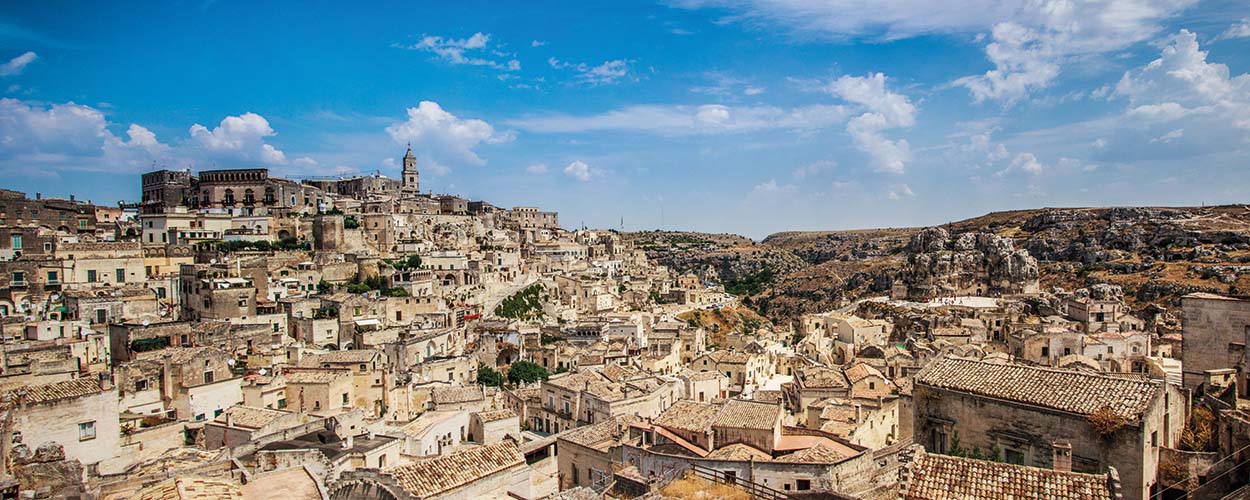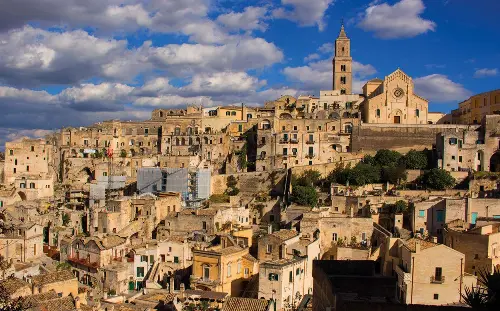
Matera 2019 European Capital of Culture
Matera and Plovdiv have been chosen as the 2019 European Capitals of Culture.
Matera overcame competition from Ravenna, Cagliari, Lecce, Perugia and Siena in the final phase of selection and is now getting ready to show off its famous Stones to the entire world, as well as various newly renovated buildings and brand-new paving in the old city centre that has been laid with the help of Mapei products.
After obtaining a total of 7 votes out of 13, Matera (Southern Italy) has been officially announced as the 2019 European Capital of Culture, together with the Bulgarian city of Plovdiv, beating off competition from the other five Italian finalists: Ravenna, Cagliari, Lecce, Perugia and Siena.
PROMOTING INNOVATIVE CULTURAL ENTERPRISES SINCE 1985
After obtaining a total of 7 votes out of 13, Matera (Southern Italy) has been officially announced as the 2019 European Capital of Culture, together with the Bulgarian city of Plovdiv, beating off competition from the other five Italian finalists: Ravenna, Cagliari, Lecce, Perugia and Siena.
This title was first awarded in 1985 to promote a better knowledge and understanding of the historical-artistic and cultural heritage of nations belonging to the European Union. The first city to earn this accolade was Athens. Nowadays, two nations from the European Union are jointly selected: this year’s winners were Leeuwarden (Netherlands) and La Valletta (Malta).
The Italian Minister of Cultural Heritage and Activities and Tourism, Dario Franceschini, stated that “this has been a wonderful experience for the six Italian cities taking part and extremely important for Italy”.
The cultural programme being drawn up for 2019, involving an overall investment of approximately 52 million Euros, is in the hands of the Matera-Basilicata 2019 Foundation. According to its president Aurelia Sole, “we are wasting no time in drawing up the programme and we are the first regional capital to have already come up with 50% of its content one year ahead of schedule. We are working all over the territory on joint-ventures to create a European-scale project. From creative industries to Basilicata University, from associations to institutions, everybody is working hard to be ready for an event we hope will leave a real legacy for Matera and southern Italy”.
A SLOGAN FOR THE FUTURE
The slogan Matera chose for its bid was “Open Future”: indeed, according to the promotion committee, “we are all obsessed by the eternal present in which we are immersed. But an ancient city like Matera is not afraid to think about the times that lie ahead. It has already reinvented itself many times and always successfully overcome the challenge posed by time”. The organisational machinery is already in motion and the city is giving itself a makeover, since this event is rightly considered to be a wonderful opportunity to promote the tourism industry and culture of the city and the entire surrounding area, with all its traditions, historical-artistic heritage and beautiful natural environment. Some experts claim that the economic impact of being awarded this accolade is worth approximately 30 million Euros to the entire area.
THE "FAMOUS" MATERA STONES AND NEW PAVING
Matera will be in the spotlight for a year, but the city is already internationally famous mainly for its Stones that are renowned all over the world. Any trip to Matera is bound to include a visit to the Stones, which became a UNESCO World Heritage Site in 1993, the first place in southern Italy to achieve this status. Matera’s Stones look like a city built directly in the rocks, complete with underground entrances, churches constructed in caves and other monuments. Matera’s ancient dwellings have been carved directly into the rock face and for centuries have formed the city’s urban agglomeration. They are divided into three main zones: Sasso Barisano to the north, Sasso Caveoso to the south and the Civita, situated centrally, where the Cathedral dating back to 1270 stands. The old city centre’s paving had to be repaired not just to make the city streets more inhabitable, but also to make Matera more welcoming for all the visitors expected next year, as you can read in the next article.












